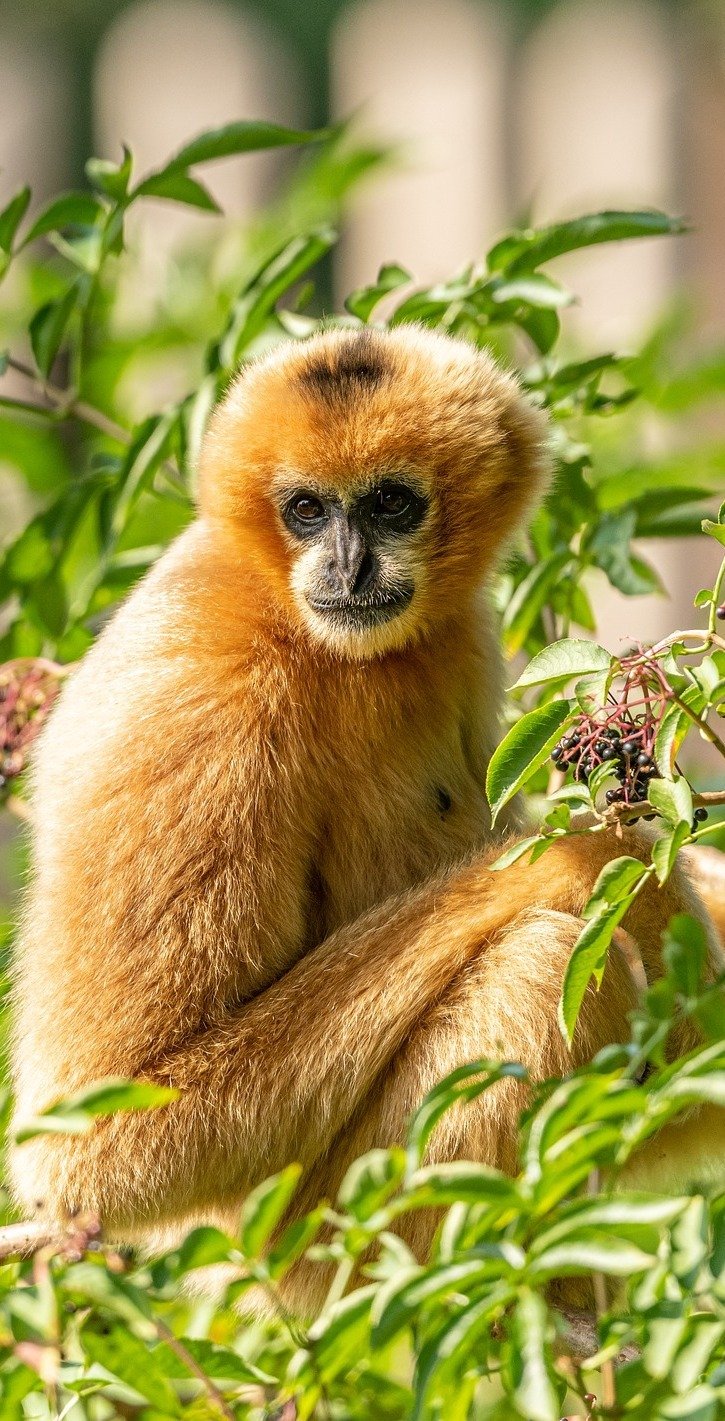
Gibbons are fascinating and intelligent animals, often known for their impressive vocalizations and social structures. But, just like any wild animal, it’s essential to approach such encounters with respect and understanding. Let’s break down the steps you should take, so you’re prepared and can appreciate the moment while keeping both you and the gibbon safe.
Understanding Gibbons: A Quick Overview
Gibbons belong to the family Hylobatidae and are often referred to as “lesser apes.” Unlike their larger relatives, such as gorillas or chimpanzees, gibbons are smaller and are known for their long arms, which help them swing gracefully from branch to branch. You might be wondering why they’re so special. Well, they play a crucial role in their ecosystems by dispersing seeds and maintaining the health of their forest homes.
There are several different species of gibbons, each with unique traits and behaviors. For instance, the white-handed gibbon is known for its striking coloration, while the siamang gibbon is famous for its loud calls that can be heard over long distances. Knowing a bit about the gibbon you’re encountering can help you appreciate the moment even more.
Stay Calm and Observe
When you spot a gibbon, the first thing to do is stay calm. You might feel excited or nervous, but staying composed is essential. Here’s the thing: gibbons are usually just as curious about you as you are about them. By remaining calm, you can enjoy observing their natural behaviors without causing stress to the animal.
Take a moment to watch from a distance. Grab your binoculars if you have them and appreciate the gibbon’s movements and interactions. Look for their playful antics—swinging from tree branches or calling to one another. This is where the magic happens. You get to witness wildlife in its natural habitat, and it’s a moment that can enrich your appreciation for nature.
Respect Their Space
Just like meeting a stranger on the street, it’s important to respect the gibbon’s personal space. Gibbons are wild animals, and approaching them too closely can lead to stress or defensive behavior. Typically, a distance of at least 50 feet is recommended. That gives them room to feel safe while you still get a great view.
You might also want to consider the time of day. Early morning or late afternoon is often best for gibbon spotting. They are more active during these times, and it’s less likely they’ll feel threatened by your presence. Here’s a little tip: avoid making loud noises or sudden movements, as they can spook these agile creatures. Instead, move slowly and quietly, just like a nature photographer waiting for the perfect shot.
Know the Signs of Distress
While gibbons can be social and playful, they can also feel stressed or threatened under certain circumstances. Understanding their body language can go a long way in ensuring a good interaction. If a gibbon starts to show signs of distress—like vocalizing loudly or moving away quickly—it’s best to give them space and retreat.
Remember, you are a guest in their home. If they appear agitated or curious but cautious, simply take a step back and allow them to approach you if they feel comfortable. Being adaptable and reading the situation is vital for both your safety and the gibbon’s well-being.
What to Avoid When Encountering Gibbons
With wild animals, there are definitely some things you should steer clear of. First off, don’t try to feed them. While it might seem like a friendly gesture, feeding gibbons can alter their natural behaviors and diet. Over time, humans providing food can lead to dependency, which is harmful in the long run.
Also, avoid using flash photography. The bright light can startle them and disrupt their natural activities. Instead, use your phone or camera without flash for a more respectful approach. And if you’re with a group, keep the noise down! Loud conversations can disturb not just gibbons but a whole host of wildlife.
Beginner Tips for Gibbon Spotting
If you’re new to wildlife observation, here are some beginner tips to help you make the most of your gibbon encounter:
- Stay patient: Wildlife often doesn’t follow a schedule. You might have to wait a bit, but that’s part of the experience.
- Bring binoculars: A good pair will enhance your viewing experience and allow you to see details from a safe distance.
- Dress appropriately: Wear neutral colors to blend in with nature and avoid drawing attention to yourself.
- Join a guided tour: If you’re unsure about going solo, a guided tour can provide valuable insights and increase your chances of a successful sighting.
Leave No Trace
As with any outdoor adventure, leaving no trace is paramount. Always follow the “Leave No Trace” principles. This means packing out whatever you pack in, including trash, food scraps, and any other waste. Not only does this help preserve the gibbon’s natural habitat, but it also ensures that future visitors can enjoy their experience without the negative impact of human debris.
Also, stay on marked trails and avoid disturbing the surrounding environment. Gibbons thrive in healthy ecosystems, and even minor disruptions can affect their habitat.
Reflecting on Your Experience
After your encounter with a gibbon, take a moment to reflect on the experience. What did you learn? How did it feel to see a gibbon in the wild? Wildlife encounters can change our perspectives, inspiring us to appreciate and conserve nature even more.
Consider sharing your experience with others. Whether it’s through social media or a casual conversation with friends, sharing your adventure can help raise awareness about gibbons and their habitats. You never know who might feel inspired to go out and witness the wonders of nature for themselves.
In conclusion, encountering a gibbon in the wild is a unique opportunity that can leave a lasting impression. By knowing how to act—observing calmly, respecting their space, and understanding their needs—you can have a rewarding experience while ensuring their safety. So, the next time you venture into the wild, remember to embrace the moment and treasure the beauty of gibbons and their natural habitat. Happy exploring!

